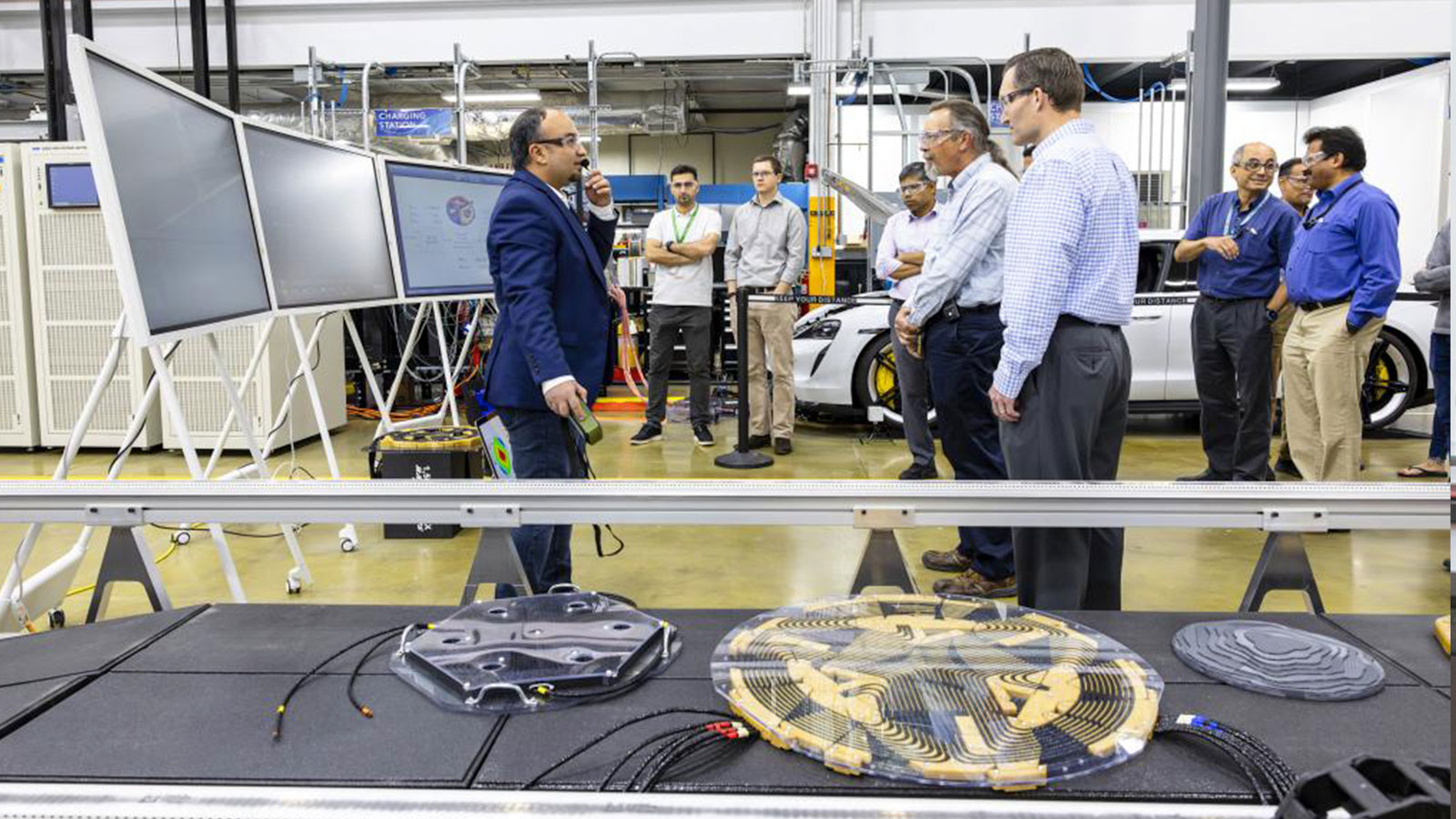Researchers at the Oak Ridge National Laboratory (ORNL), in a joint effort with Volkswagen Group of America, have successfully executed a wireless power transfer of 270 kW to a Porsche Taycan, marking a new record for wireless EV charging.
The demonstration showcased the use of a polyphase wireless charging system developed by ORNL, which outperformed the laboratory’s previous 100-kW demonstration. This development highlights potential advancements in the charging of electric vehicles, particularly light-duty passenger vehicles like the Porsche Taycan, which typically cannot accommodate larger, more conventional charging systems due to spatial and weight constraints.
Current industry standards for wireless charging systems for light-duty vehicles cap at 20 kW, with efficiencies up to 92%. The ORNL system, utilising uniquely designed lightweight polyphase electromagnetic coupling coils, allows for a much higher power density, significantly reducing the size and weight of the charging system integrated into the vehicle’s undercarriage.
“In the past three months, the ORNL vehicle power electronics and electric drives research teams have set impressive world records for wireless charging,” stated Lee Slezak, the US Department of Energy’s Vehicle Technologies Office Technology Manager for grid and charging infrastructures.
The system includes safety measures to prevent voltage or current overloads, overheating, and short-circuiting, featuring shutdown procedures to tackle unexpected power interruptions safely. According to ORNL’s Omer Onar, leader of the Vehicle Power Electronics group, “The receiver coil designed for the Porsche Taycan research vehicle can achieve 8 to 10 times higher power density compared to existing systems.”
This successful 270-kW demonstration concludes a Department of Energy-funded project that began in 2021, aimed at developing the highest-power density wireless charging system for electric vehicles. This includes the study of rotating electromagnetic fields to enhance efficiency and reduce voltage issues.
Lyndon Lie, Volkswagen Group of America’s chief engineering officer, remarked on the joint progress, “It’s exciting to see the significant progress Volkswagen and Oak Ridge National Lab are making together in many critical technologies. Wireless charging like that demonstrated with Oak Ridge could make charging EVs significantly easier for consumers, with quick charging times encouraging zero emissions adoption and leading to a more sustainable transportation sector.”
Onar also mentioned future collaboration goals with Volkswagen, which include refining the 270-kW prototype for more cost-effective production and exploring residential charging solutions.

